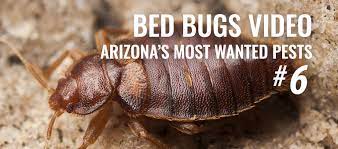
Pest control has evolved significantly over the centuries, transforming from rudimentary practices to sophisticated, environmentally conscious strategies. Understanding the evolution of indianapolis bed bug exterminator not only reveals how far we’ve come but also sheds light on the future of keeping our homes and environments pest-free.
Historical Context: Early Techniques
In ancient times, pest control methods were often as diverse as the pests themselves. The Egyptians, for example, used cats to control rodent populations, a practice that demonstrated an early understanding of natural pest control. The Greeks and Romans employed a range of methods, from physical traps to the use of natural predators. Despite their ingenuity, these early techniques were limited by a lack of scientific understanding and technology.
The Rise of Chemical Solutions
The Industrial Revolution marked a significant turning point in pest control. With advancements in chemistry and technology, new chemical solutions emerged, such as pesticides. Early synthetic pesticides, like DDT, were hailed as revolutionary due to their effectiveness against a broad spectrum of pests. However, the negative environmental and health impacts of these chemicals soon became apparent, leading to increased scrutiny and regulation.
Integrated Pest Management (IPM): A Paradigm Shift
In response to the drawbacks of chemical pesticides, the concept of Integrated Pest Management (IPM) gained prominence in the late 20th century. IPM is a holistic approach that combines various strategies to manage pests in an economically and environmentally sustainable way. It emphasizes the importance of monitoring and understanding pest life cycles, using biological controls (like introducing natural predators), and applying chemical controls judiciously. This approach minimizes harm to non-target species and reduces the likelihood of pesticide resistance.
Modern Innovations: Technology Meets Pest Control
Today, pest control has entered a new era of innovation. Technology plays a pivotal role in contemporary pest management practices. Smart traps and sensors provide real-time data on pest activity, allowing for targeted interventions. For instance, advanced traps use infrared technology to detect pests and can alert pest control professionals to infestations before they become severe.
Biological control methods have also advanced. Researchers are developing new strains of beneficial insects and microorganisms to target specific pests more effectively. Additionally, genetic modifications, such as the development of sterile male insects to reduce populations, offer promising new tools in the fight against pests.
Sustainable Practices and Eco-Friendly Solutions
Sustainability is a key focus in modern pest control. There is a growing emphasis on eco-friendly practices that minimize environmental impact. For instance, organic pest control options, like neem oil and diatomaceous earth, offer alternatives to synthetic chemicals. Additionally, reducing habitat destruction and promoting biodiversity can help maintain natural pest control systems.
The Future of Pest Control
Looking ahead, the future of pest control is likely to be shaped by continued advancements in technology and a deeper understanding of ecological balance. Innovations such as precision agriculture and automated pest detection systems promise to further refine pest management practices. As our awareness of environmental issues grows, integrating sustainable practices into pest control strategies will become increasingly important.
Conclusion
The journey of pest control from ancient practices to modern solutions reflects humanity’s ongoing quest to balance effectiveness with environmental responsibility. By embracing a combination of traditional wisdom and cutting-edge technology, we can create pest control strategies that protect our homes and ecosystems for generations to come.